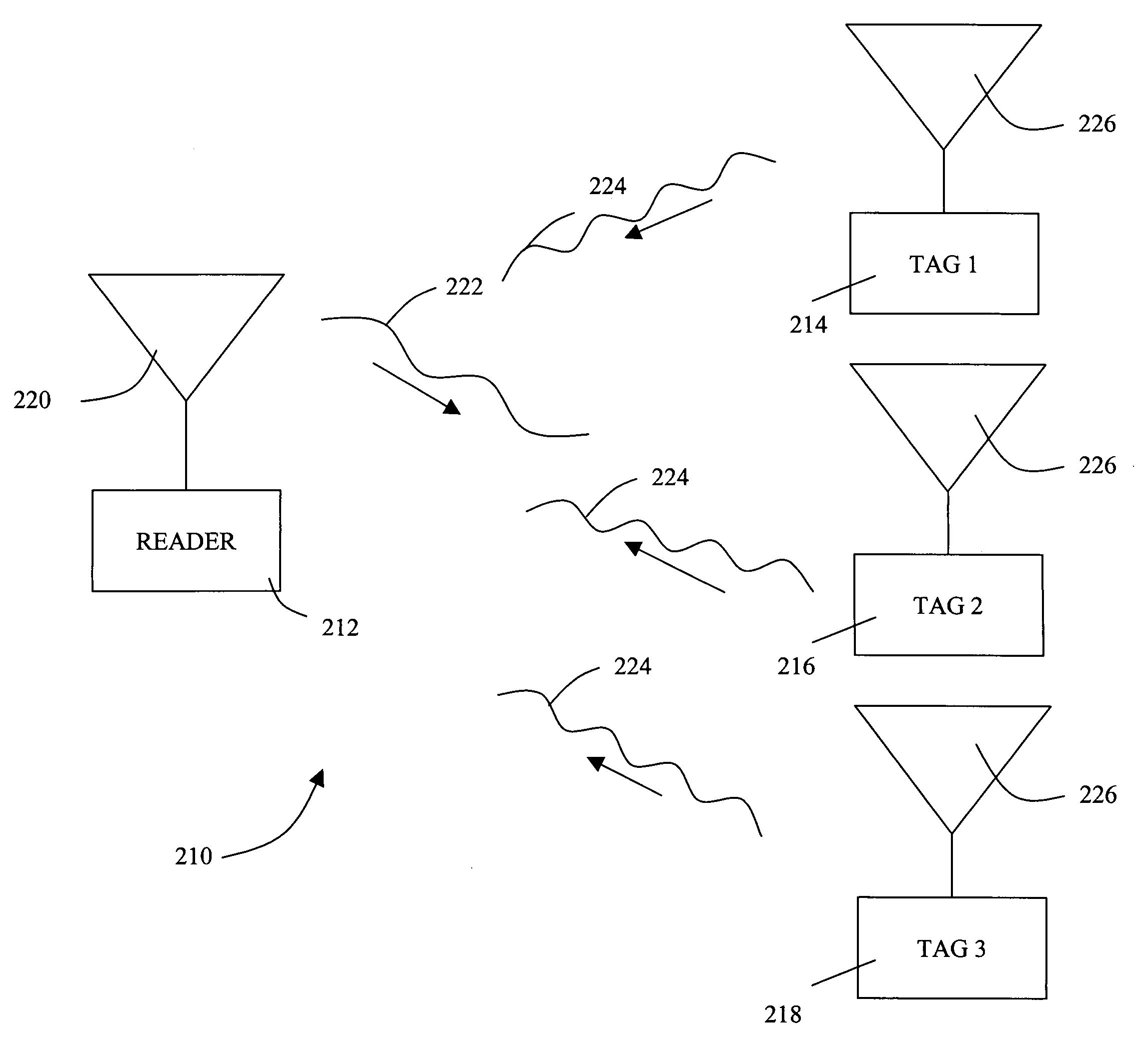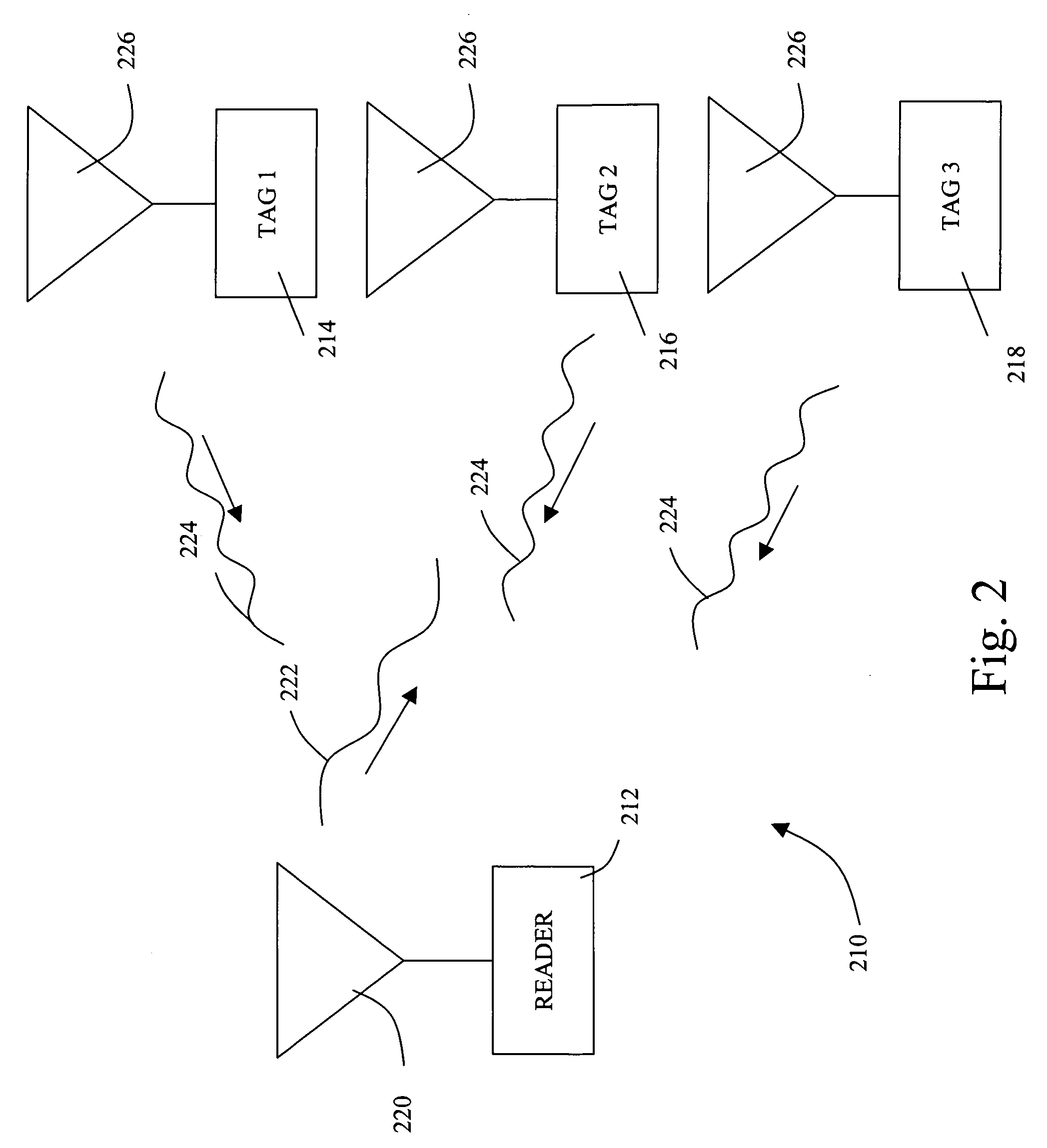Remote communication device and system for communication
a communication device and remote communication technology, applied in the field of radio frequency (rf) devices, to achieve the effects of increasing processing gain, effective use of oversampling, and avoiding interferen
- Summary
- Abstract
- Description
- Claims
- Application Information
AI Technical Summary
Benefits of technology
Problems solved by technology
Method used
Image
Examples
example 1
[0058]For example, FIG. 3 shows a frequency hopping scheme of one embodiment of the present invention. In this embodiment of the present invention, the remote communication device has been modulating at 2.000 MHz and has an identification bandwidth from 2.032 MHz to 1.968 MHz. The remote communication device can be instructed to modulate the antenna at one of five prescribed frequencies, in steps of about 16 kHz up and down the band from 2.000 MHz. Each change in frequency corresponds to two bits of binary information according to the following scheme: +16 kHz=01; +32 kHZ=00; −16 kHz=10; −32 kHz=11. As a result, in this Example, n is 2 and the modulation frequency is 2.000 MHz. Note, the difference between each encoding frequency may not be exactly a multiple of 16 kHz. Since a change from one encoding frequency to another encoding frequency were made by shifting the secondary frequency some percentage up or down, this causes steps to a higher frequency to be larger than steps to lo...
example 2
[0060]In another example, a remote communication device has been modulating at 2.000 MHz. It is instructed to modulate the antenna at one of five prescribed frequencies, in steps of about 8 kHz up and down the band from 2.000 MHz. Each change in frequency corresponds to two bits of binary information according to the following scheme: +8 kHz=01; +16 kHz=00; −8 kHz=10; −16 kHz=11. Since a change from one encoding frequency to another encoding frequency were made by shifting the secondary frequency some percentage up or down, this causes steps to a higher frequency to be larger than steps to lower frequencies.
[0061]Similar to the procedure described in Example 1, a jump at 1 ms from 2.000 MHz to 2.008 MHz corresponds to the two bits “01”, a second jump up 16 kHz at 2 ms corresponds to the data set “00”, and so forth. The cycle of five frequencies is repeating and allows the remote communication device to scroll through the encoding frequencies within the identification bandwidth assoc...
PUM
 Login to View More
Login to View More Abstract
Description
Claims
Application Information
 Login to View More
Login to View More - R&D
- Intellectual Property
- Life Sciences
- Materials
- Tech Scout
- Unparalleled Data Quality
- Higher Quality Content
- 60% Fewer Hallucinations
Browse by: Latest US Patents, China's latest patents, Technical Efficacy Thesaurus, Application Domain, Technology Topic, Popular Technical Reports.
© 2025 PatSnap. All rights reserved.Legal|Privacy policy|Modern Slavery Act Transparency Statement|Sitemap|About US| Contact US: help@patsnap.com



